Practical Application for Long-Term Athletic Development
by Larry Meadors PhD, CSCS,*D, NSCA-CPT,*D, RSCC*E, USAW-2
Other
May 2012
Learn about the framework for practical, functional, and sequential skill development for a “best practices” model. This model is designed to develop a movement vocabulary, physical literacy, and movement skills for improved athleticism.
Introduction
Developing a comprehensive long-term athletic development program in the United States is critical. The program must start at the youth level. This article will focus on ages 3–14 years. The following information is for coaches, parents, and sport organization directors.
To date, little has been done to provide youth coaches with knowledge of how to teach and develop proper movement techniques. Coaches are left often with an excessive number of competitions, incomplete athlete development, and an emphasis on sports-specific skills only. Many athletes suffer systemic overuse injuries caused by improper training and repeated sub-maximal repetition stress, followed by inadequate recovery (26).
This article will offer a framework for practical, functional, and sequential skill development to assist coaches with a “best practices” model to develop a movement vocabulary, physical literacy, and movement skills that improve athleticism.
Uncovering the Disconnect between Athleticism and Athletic Development
For several decades, sport coaches have expressed the need for a long-term strategy to develop athletes (19). A massive amount of information (available to coaches, teachers, parents, and youth sport organizations) has been written about the development, growth, and maturation of developing athletes (13). Somehow, the importance of the message has gotten lost (12). It is clear that a better job of education and dissemination of information from scientific-based research to the parent and practitioner/coach of the athletes are needed (17).
An Albert Einstein quote perhaps summarizes the situation best: “The definition of insanity is doing the same thing over and over, and expecting different results.”
In today’s society, many issues face young athletes. Sport participation can be a countermeasure to a sedentary lifestyle which is clearly prevalent and dangerous (18). Often, individuals experience failed attempts to participate in organized sports because too much emphasis is placed on competition, with little attention on developing proper athleticism (appropriate movement skills) (20,21).
Individuals with limited sports and movement skills often stop participating (3,4). In turn, this neglect often leads to a decreased interest in any type of physical activity (5). The result is a failure to learn or develop physical literacy, or proper athletic movement in a sequential and progressive manner (31). A sedentary lifestyle then follows. Sedentary living causes such health problems as obesity, diabetes, high blood pressure, cardiovascular disease, and other chronic diseases that evolve from a lifelong problem starting in childhood.
Applied to athletics, these factors result in increased injury incidences and rates, and limited skill development (26,27). These musculoskeletal injury factors are the result of overall low strength levels, incorrect landing mechanics, incorrect deceleration techniques, ligament laxity, muscle tightness, overly developed quadriceps, and over-reliance on a particular limb. These factors often lead to low back and limb misalignment and mechanics due to poor recruitment and control of the gluteals (19,23,28).
Paradigm Shift to Long-Term Athletic Development
School health and physical education programs, for kindergarten through high school, and local youth sports programs, need to implement a long-term athletic development (LTAD) model (24). LTAD is a unique concept in the United States. Similar models are being implemented in Canada, the United Kingdom, Australia, and Asia. Compared with programs in other countries, the U.S. is several decades behind in its development and implementation of a comprehensive LTAD program.
According to Balyi, his theoretical model can, when properly implemented, provide a change in sports programs and athletic development by identifying gaps, and providing guidelines for movement problem solving, improving performance at various stages of athletic development, and outlining a framework to develop physical literacy, physical fitness for life, and competitive athletics (2).
A long-term commitment to physical literacy, proper training to improve athleticism, and sport skill development is vital to produce optimal athletic potential. Proper training and athletic development require time. Moreover, a paradigm shift needs to occur regarding the pace and process of athletic development. This paradigm shift has its own language:
“Physical Literacy is a fundamental and valued human capability that can be described as a disposition acquired by human individuals encompassing the motivation, confidence, and physical competence that establishes purposeful physical activity as an integral part of their lifestyle,” (34).
Athleticism is the result of athletic movement skills development that involves learning proper techniques for agility, balance, coordination, flexibility, metabolic training, power, reaction time, speed, strength, and strength endurance (18).
Talent Development
Scientific research concludes that it takes 8 – 12 years of training for a talented athlete to reach elite levels (6,14). It also can be argued that it takes that long, if not longer, to produce quality youth coaches who understand how to develop proper skills in children. There are no shortcuts to athletic success (13,33). Unfortunately, some coaches and parents overemphasize competition, while at the same time, approach proper movement skills and development to improve athleticism with little or no interest.
A well-planned and balanced schedule of training, practice, competition, and recovery will enhance optimum development throughout the individual’s athletic career (32). Often, change for implementation of LTAD models is difficult, because program administrators and coaches are uninformed and at times reticent to such change. Moreover, parental perspective and involvement is unresponsive (games versus appropriate training and practice time), the modern sports culture is misleading (“everyone is an expert,” “immediate gratification,” and “entitlement”), and the early specialization training model for team sports is inadequate, making LTAD implementation difficult (9).
Importance of Coach Education
Balyi reports that the early specialization training model leads to increased dropout rates, overuse injuries, early burnout, overemphasis on sport-specific preparation and a lack of basic movement skill development (2).
Coach education is the foundation of long-term athletic development. Many individuals only observe “the tip of the iceberg,” and overlook that athletic performance occurs far beyond the sports season (7). A comprehensive LTAD program, along with skills and knowledge of both the sports coach and the strength and conditioning coach is invaluable to enhance performance (8). Proper technique and skill development must be taught and supervised by informed and experienced coaches. Also, youth coaches should be educated and qualified to the highest standard and work in an environment that is appropriately managed.
Focus on Fundamental Movement Skills
Regardless of the sports organization, the most important elements are teaching proper physical literacy and improvement of athleticism through proper skill movements learned in a sequential and progressive program design (19). These components will help an athlete become less susceptible to injuries, improve an athlete’s ability to perform technical and tactical skills more effectively, and assist the athlete to cope with the demands of the sport (29). Without these components of training, individuals might never reach optimal athletic development (19). Figure 1 is an overview of a Sequential Sports Program Movement Development Model.
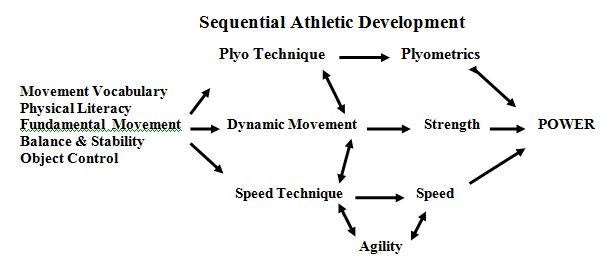
Figure 1. Sequential Sports Program Movement Development Model
Areas of focus for the entire scope of a sports program development are physical literacy and athletic movement skills development built upon a sequential program design model. Athletic development should not focus on a “high performance” model, but on skill improvement and on athlete retention. Each individual is an athlete at his/her own level. Emphasis should be on increasing each individual’s athleticism, which will keep individuals playing longer and create a larger pool of potential talent (24).
Often, coaches will implement a “cookbook” of thoughtless drills, which is an ineffective way of teaching proper athletic skill techniques. Anyone can purchase equipment or create a drill, which are only a means to an end. Instead, focus on essentials—what needs to be encouraged, and what is best for the athlete at that particular time—with knowledge of what is to come in the future.
Coaches/teachers must know what correct techniques look like and how to teach and make corrections. The instructors must know the proper position of the trunk, arms, legs, and head as the individual performs various movements.
The majority of athletic movements are one-dimensional (i.e., vertical, lateral, linear, diagonal, and rotational. All directly affect proper acceleration and deceleration skills. Jeffries lists five important terms to assist a coach in identifying proper body position in relationship to these movements (25):
- Base of support (BOS): proper foot position in relation to head, trunk, arms
- Center of mass (COM): proper position of head, trunk, arms, legs
- Line of force (LOF): proper alignment of head, trunk arms, legs
- Body control (BC): proper control of head, trunk, arms, legs
- Posture alignment (PA): proper position of head, trunk, arms, legs
Practical Application of Long-Term Athletic Development
After listening to various LTAD presentations and having conversations with sport and strength coaches and youth sports program directors, I have yet to observe an in-depth comprehensive LTAD program in the U.S. other than a regurgitation of Balyi’s language and vocabulary in explaining his program. To Balyi’s credit, he has provided a model to follow. However, little has been done to provide coaches with scientific data to support his theory or the knowledge of how to teach and develop proper movement technique.
Sport programs and coaches resort to overemphasizing competition and related sport skills. From a coach’s standpoint, there is need for practical, functional, and sequential athlete document that will provide coaches with best practices for the development of strength, flexibility, and stability in their athletes. This document must include movement vocabulary, physical literacy, and athletic movement skills, if athleticism is to be achieved.
In the fall of 2009, I was asked to develop a sequential LTAD model focused on physical literacy and athleticism for a youth baseball program utilizing physical literacy and athletic movement components. The target program encompasses a large number of volunteer coaches with athletes (ages 3 –14) on an annual basis. Coach education is vital to teach proper and appropriate physical literacy and athletic movement skills in a sequential manner.
Figure 2 is designed to identify general areas needed for physical literacy and fundamental and movement skill foundations. The objective of this overview is to teach proper movement as opposed to just running drills (15,16,22,30).
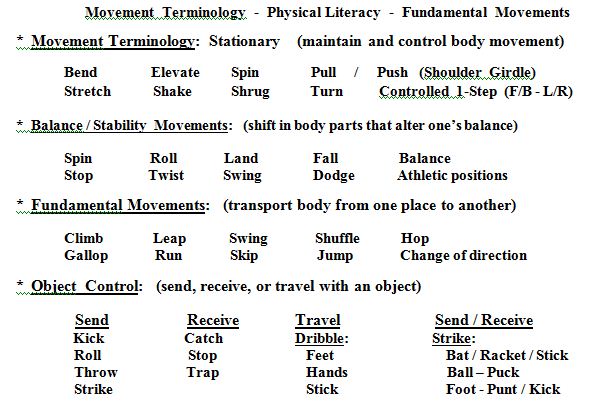
Figure 2. Physical literacy and fundamental movement
Within the above categories, there is a need for developmental progression of movements and skills. For example, balance, stability, and fundamental movements should be mastered before progressing. The individual should demonstrate age appropriate competency of these components before attempting to demonstrate more complex object control skills because gross motor skills should be developed before fine motor skills (19).
The following list of program components contains a series of movement component categories that correspond and expand the physical literacy and movement foundation:
- Balance and stability
- Fundamental/dynamic movement
- Object control
- Plyometrics
- Speed and agility (multidirectional)
- Fun drills
- Strength/endurance/power
This list is not intended to be all-inclusive, but to provide a series of categories in which fundamental movements and other areas of athleticism must be taught in a sequential manner. The selection of movement skills is based on a modified program design model, which includes a needs analysis and exercise selection, order, volume, intensity, and frequency (1). A baseline assessment will identify the individual’s athletic training background and movement competencies.
Regardless of the assessment process, too much emphasis is placed on the outcome and not enough on the importance of proper technique. Misguided emphasis will result in delayed proper athletic development. The intent of this endeavor is to teach foundational movement skills and improve athleticism.
Coaches often become possessive of their sport’s skill practice time and are not willing to relinquish time to teach fundamental movement. Regardless of an athlete’s talent level, the desire to achieve agility, power, speed, and strength dominates a sport coach’s plan to win, and results in missed opportunities to develop, based on the individual’s maturation. Coach education is the foundation of the program’s success and must involve understanding the importance of exercise selection and sequence, and how these influence physical literacy and athleticism.
Exercise selection should be based on an individual’s background and experience paired with coaching points and progression standards. An example of sequence includes simple to complex, slow to fast, static to dynamic, and unloaded to loaded. The athlete must be able to control his/her bodyweight, develop physical resilience, and master proper movement of all joints, in all directions and through all planes.
Coaches must understand the theory of LTAD and deliver best practices at each level. Emphasis must be placed on development, which starts with an assessment or screening to determine the individual’s strengths and weaknesses (11,19). A basic principle of maturation indicates that all children are at different stages within certain age levels. There can be a four-year difference in cognitive, emotional, and physical development in individuals of the same chronological age group (2).
Often, volunteer coaches (parents), with limited knowledge of teaching and identifying proper movements, are in charge of providing the only fundamental movement skills for youth. Limited knowledge is due to lack of priority to provide health and physical education programs at all levels within a school. Therefore, youth sports programs may be the only entity to provide the basis for fundamental movements and physical literacy. A successful LTAD program must provide coach education to implement a sequential pathway and should be able to answer these questions:
- Is the process evidence-based?
- Are best practices implemented to provide proper training, competition, and recovery?
- Is exercise selection sequential and progressive?
- Has coach education been provided in all aspects of athletic development?
- Does the program provide for individual maturation variables (physical, mental, emotional)?
- Is education and communication provided for coaches, parents, and athletes?
The following tables provide a series of sequential movements and serve as yearly benchmarks for the individual to accomplish in a reasonable amount of time (i.e., when there is an age change or at the end of the year). The structure of the youth baseball program is divided into age groups for training and competition. To correspond with the sports program’s age-related organization the following movements are introduced:
- Ages 3 and 4: Teach balance/stability, fundamental/dynamic movement, object control
- Ages 5 and 6: Teach and review the above skills, add plyometrics, speed and agility
- Ages 7 and 8: Teach and review the above skills, add strength, endurance, power
- Ages 9 through 14: Teach and review the above skills
A list of movements is provided in Figures 3-10. Due to limited space, an explanation of the complete description of each movement and/or exercise is restricted
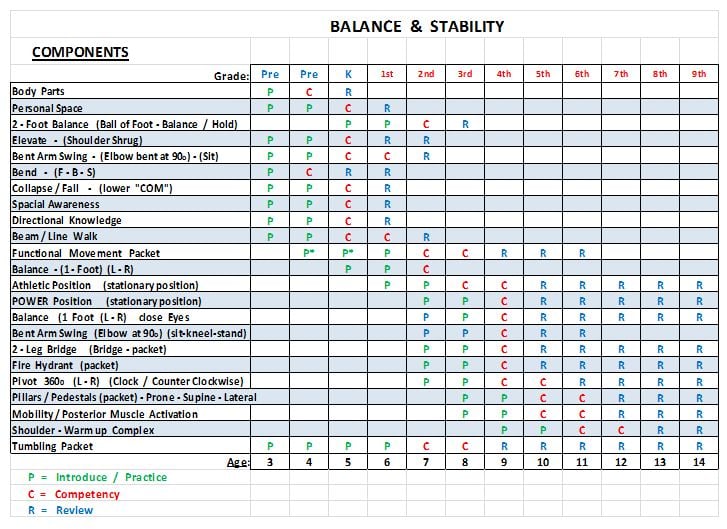
Figure 3. Balance and Stability
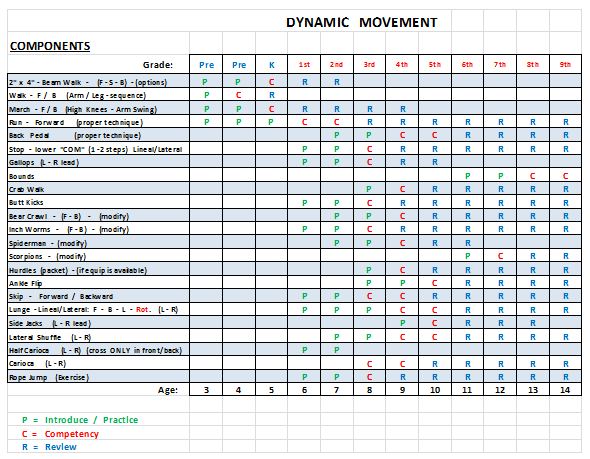
Figure 4. Dynamic Movement
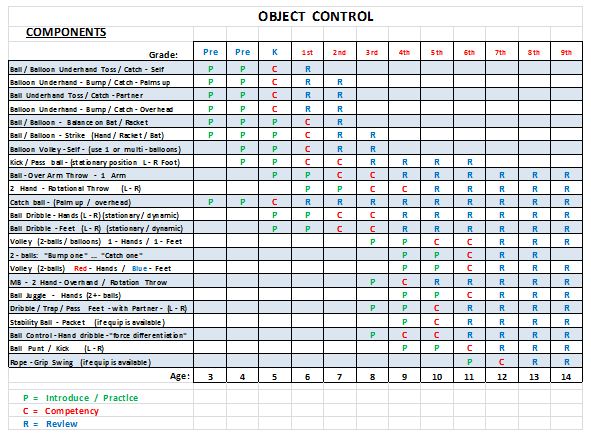
Figure 5. Object Control
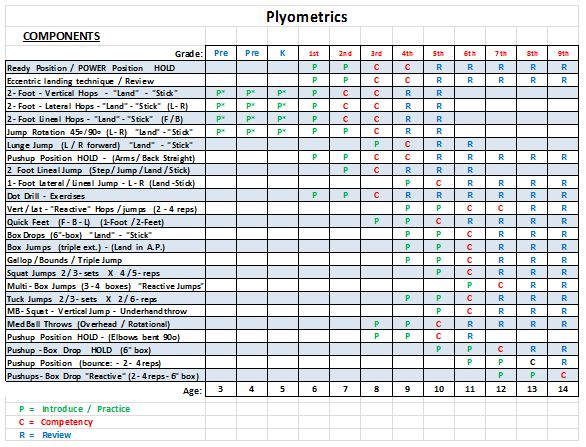
Figure 6. Plyometrics
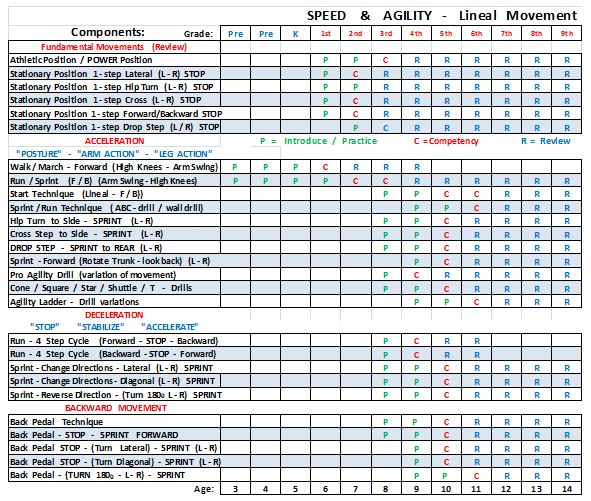
Figure 7. Speed and Agility - Lineal Movement
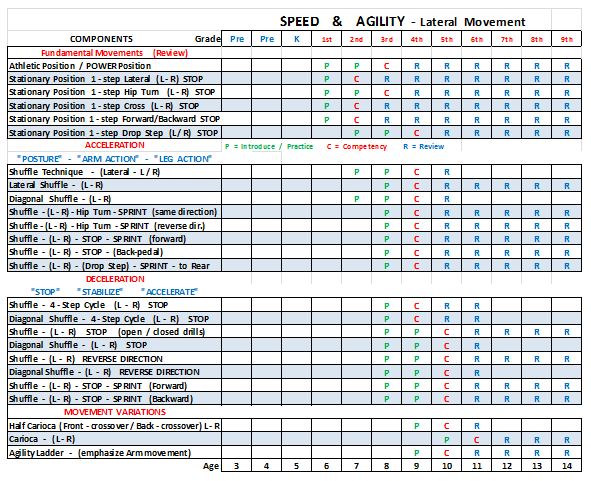
Figure 8. Speed and Agility - Lateral Movement
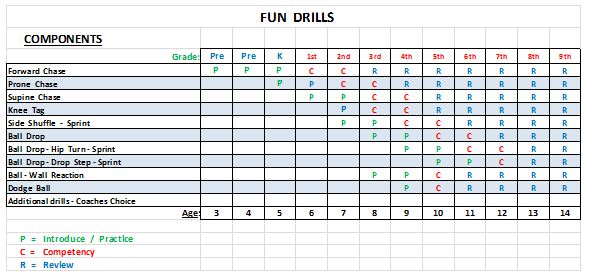
Figure 9. Fun Drills
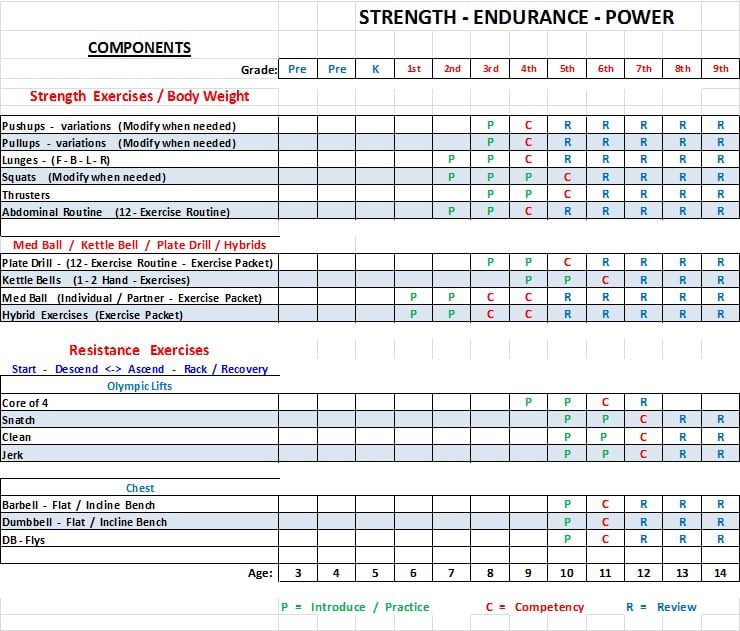
Figure 10. Strength, Endurance, Power (1/2)
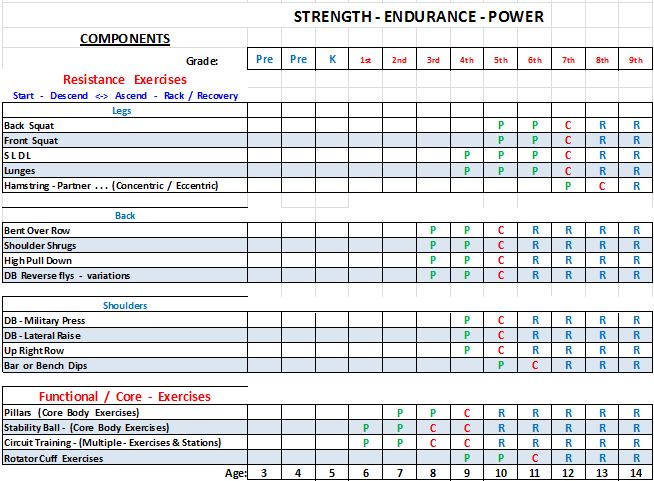
Figure 10. Strength, Endurance, Power (2/2)
The future of LTAD in the U.S. depends on the education and involvement of parents, coaches, and sport program organizations with an educational system. Regardless of who is involved, priority must be on what is best for the athlete. At present, the best coaches work with the most advanced athletes while volunteers coach the most critical areas during critical periods of development. Often, the focus of programs and coaches is to promote winning rather than developing proper technical and tactical skills.
Coaches at all levels must be trained and supported so proper skills can be taught, and corrections, if necessary, can be made. Frequently, adult programs are imposed on young athletes, thus the basic components of physical literacy or athleticism are not implemented in a sequential manner. As a result, many athletes never reach optimal performance levels. The results of these inadequacies create poor skill movements due to a lack of proper development, poor skill development because of poor teaching skills, and poor sport skill development because of excessive competition.
The dilemma associated with injury rates in turn reduces the individual’s general fitness level, which leads to the possibility of increased obesity and other health-related problems.
A successful LTAD program must implement, and become committed to, coach education at all levels. It should be coach-driven and athlete-focused in an attempt to create a family concept, and include proper training, competition, and a recovery plan. Also, it must allow for individual physical, mental, and emotional development. Typically, we fear what we do not understand; we distrust what is different. Change is inevitable, progress is optional
References
- Baechle, TR, and Earle, RW. Essentials of Strength Training and ConditioningChampaign, IL: Human Kinetics; 395-422, 2000.
- Balyi, I. Sport System Building and Long Term Athlete Development in Canada, The Situations and Solutions, Coaches Report. The Official Publication of the Professional Coaches Association 8(1): 25-28, 2001.
- Barnett, LM, Van Beurden, E, Morgan, PJ, Brooks, LO, and Beard, JR. Does Childhood Motor Skill Proficiency Predict Adolescent Fitness? Medicine & Science in Sports & Exercise 40(12): 2137-2144, 2008.
- Barnett, LM, Van Beurden, E, Morgan, PJ, Brooks, LO, and Beard, JR. Childhood Motor Skill Proficiency as a Predictor of Adolescent Activity. Journal of Adolescent Health 44(3): 252-259, 2009.
- Barnett, LM, Morgan, P.J, Van Beurden, E, Ball, K, and Lubans, DR. A Reverse Pathway? Actual and Perceived Skill Proficiency and Physical Activity. Medicine & Science in Sports & Exercise 43(5): 898-904, 2011.
- Bloom, B. Developing Talent in Young People. New York: Ballantine Books; 1985.
- Bompa, T. Total Training for Young Champions. Champaign, IL: Human Kinetics; 2000.
- Brewer, C. Strength and Conditioning for Sport: A Practical Guideline for Coaches. Leeds, UK: Coachwise Business Solutions; 2008.
- Council on Sports Medicine and Fitness. Intensive and Sports Specialization in Young Athletes. Pediatrics (Electronic version) 106:154-157, 2000.
- Chu, D, Faigenbaum, A, and Falkel, J. Progression Plyometrics for Kids. Monterey, CA: Healthy Learning; 2006.
- Cook, G. Athletic Body in Balance. Champaign, IL: Human Kinetics; 11-16, 25 -86, 2003
- Drabik, J. Children & Sports Training How Your Future Champions Should Exercise to Be Healthy, Fit and Happy. Island Pond, VR: Stadion Publishing Company Inc.; 1996.
- Earle, C. Coaching Young Performers. Sport Coach UK. (2nd Ed.). Chelsea, England: Coachwise Business Solutions, 2005.
- Ericcson, KA, Krampe, RT, and Clemens, TR. The Role of Deliberate Practice in the Acquisition of Expert Performance. Psychological Review 100(3): 363-406, 1993.
- Gabbard, CP. Lifelong Motor Development. Toronto: Allyn & Bacon; 2000.
- Gallahue, DL. Fundamental Movement Abilities. Indianapolis, IN: Brown & Benchmark; 1993.
- Gamble, P. Approaching Physical Preparation for Youth Team-Sports Players. Strength and Conditioning Journal 30(1): 29-42, 2008.
- Gambetta, V, and Winkler, G. Sports Specific Speed the 3 S System. Sarasota, FL: Gambetta Sports Training System, Inc.; 2001.
- Giles, K. Assessment Manual 2011. Langford, Bedfordshire: Movement Dynamics, UK, Ltd.
- Gorman, C. Why More Kids Are Getting Hurt. Time Magazine May 31, 2005.
- Gorman, C. How We’re Harming Young Athletes. Time Magazine September 10, 2006.
- Haywood, K, and Gretchen, N. Lifespan Motor Development. Champaign, IL: Human Kinetics; 2001.
- Hawkins, D. and Metheny, J. Overuse Injuries in Youth Sports: Biomechanical Considerations. Medicine & Science in Sport & Exercise (Electronic version) 33(10): 1701-1707, 2001.
- Howard, R, and Faigenbaum, A. Issues in Training Youth That Impact High School Athletic Preparation. Strength and Conditioning Journal 31(3): 55-57, 2009.
- Jefferies, I. Gamespeed: Movement Training for Superior Sport Performance. Monterey, CA: Coaches Choice; 2010
- Johnson, J. Overuse Injuries in Young Athletes: Causes and Prevention. Strength and ConditioningJournal 30(2): 27-31, 2008.
- Little Athletes, Big Injuries. Time Magazine February 14, 2008.
- Lysens, R, Ostyn, M, Vanden Auweela, Y, Lefevre, J, Vuysteke, M, and Renson, L. The Accident-Prone and Over-Prone Profiles of Young Athletes. American Journal of SportsMedicine (Electronic versions) 17(1): 612-619, 1989.
- Myer, G, Faigenbaum, A, Ford, K, Best, T, Bergeron, M, and Hewett, T. When to Initiate Integrative Neuromuscular Training to Reduce Sport-Related Injures and Enhance Health inYouth? Current Sports medical Reports 10(3): 155-66, 2011.
- Payne, GV, and Isaacs, LD. Human Motor Development. Toronto: McGraw-Hill; 2002.
Shanmugan, C, and Maffulli, N. Sport Injuries in Children. British Medical Bulletin (Electronic version) 86(1): 33-57, 2008. - Stone, MH, Stone, M, and Sands, W. Principles of Resistance Training and Practices. Champaign, IL: Human Kinetics; 241-295, 2007.
- Wickel, E, and Elsenmann, J. Contributions of Youth Sports to Daily Physical Activity Among 6-12 year old Boys. Medicine & Science in Sport & Exercise 39(9): 1493-1500, 2007.
- Whitehead, M. The Concept of Physical Literacy. European Journal of Physical Education (6): 127-138, 2001.
Coaches
Exercise Science
athletic long-term youth skill development movement movement skills athleticism physical literacy skill building
